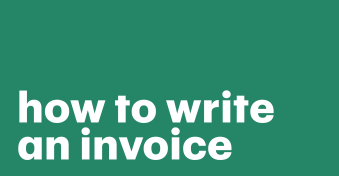For most grad students, preparing a thesis proposal is the first major step when writing a master’s thesis.
A strong thesis proposal:
- Acts as a project roadmap before major work begins.
- Outlines the research you plan to complete.
- Provides background, context, and qualifications.
- Limits and narrows the scope of the project.
- Highlights the frameworks and methodologies to be used.
- Establishes timelines, budgets, and resources.
But, while the concept of a thesis proposal is easy to understand, these documents can be difficult to write due to both their complexity and the need for students to limit their scope of coverage on their chosen topic.
It’s a lot to manage.
Fortunately, with the right templates and strategies, it is entirely doable.
This article will explain how to write a preliminary thesis, and how to overcome some of the hurdles most graduate students encounter along the way.
Key takeaways
- A thesis proposal covers what topics you plan to research and write about as part of your master’s thesis.
- Your proposal should properly define the scope of your research, as well as the questions you intend to explore and the methodology used to answer those questions.
- A thesis can act as a project outline, going so far as to define the project structure, including proposed chapters, research sources, and more.
→DOWNLOAD NOW: FREE THESIS PROPOSAL TEMPLATE
Step 1. Outlining
While your thesis proposal is critical during the earliest stages of your project, producing this document isn’t the first thing you should do.
Before you begin writing a thesis proposal, you’ll need to do some preliminary research and establish the basic premise of your content.
Writing a proposal will help to condense your research and narrow the scope of the project even further.
Your thesis proposal starts with outlining the materials you’ve gathered.
This is important, because the proposal is as much for your benefit as it is for the advisors and administrators overseeing your project.
Here are the items you’ll need before you try to create a thesis proposal:
- Aim, scope, and basic questions. What is the goal of your thesis? What question, hypothesis, theme, or idea do you intend to test or examine?
- Resources. Do you have the information you need in order to successfully complete this project? Is the body of research substantial enough to dive into your desired topic? Do you have access to the data, assets, or equipment you will need for this project to be viable?
- Approach and methodology. How do you intend to answer your question or test your hypothesis? What methods will you use? What steps will you take? How will you accomplish your goals?
- Timelines and costs. How long will it take to complete this project? How much will it cost? Who will cover the expenses?
Step 2. Defining a structure
In order to write your proposal, you need to understand the common structure of the document.
The typical parts of a thesis proposal are as follows.
1. Abstract
This is the outline or the summary of your work and research methodology.
2. Introduction
An introduction is what sets the stage for the rest of your paper. It puts the rest of your research and ideas in the correct context.
3. Existing literature/significant prior research
All of your ideas will be supported with research and other well-known literature.
This gives your work credibility, and helps you avoid accusations of plagiarism.
4. Thesis or project statement
Your thesis statement is a concise explanation of the argument made in your paper.
5. Approach
In this section, you’ll include a brief overview of how you plan to approach the topic and the research method used for your work.
Depending on your approach, you may also need to include information regarding costs, budget, and timelines.
6. Potential outcomes
In this section, you’ll outline what you expect to find through your research project.
7. Limitations
Every study comes with its own unique limitations or constraints which impact the results.
Outline these limitations, and explain how they could impact the findings in your proposal.
8. Contributions to knowledge
This is your opportunity to explain how your work will contribute to your field of study.
9. Proposed dissertation chapters
This section will include an outline of how you plan to write and format your dissertation.
While most thesis proposals follow this basic outline, be sure to check with your advisor and administrative team before you begin your draft.
Many schools offer templates for thesis proposals, and they may expect you to adhere to their predetermined formats.
If no such guidelines exist or you’re free to deviate any prescribed template, take the opportunity to tailor the format in a way that highlights the benefits of your proposal.
It’s also worth noting that every proposal may not require each item listed above.
For example, a proposal for a close review of bestselling literature from the early 2000s with a focus on race and culture may not require much explanation in the way of budgeting and cost.
Step 3. Planning your writing
The best way to put together an organized thesis proposal is to determine how you will write it before you get started.
Many thesis proposals are rejected simply because students fail to plan their writing and instead try to hack everything together in a piecemeal approach.
Don’t let that happen to you.
Gather all the necessary information before you start writing, and stick to formats that highlight the value of your proposal.
The usual flow of writing a thesis proposal is as follows.
1. Outline
Start by coming up with a detailed description of the major points you’ll be making in your thesis.
2. Prepare visuals (if required)
If your thesis includes any visuals, like charts or tables, it can help to prepare these ahead of time.
This will help support the arguments made in your thesis.
3. Establish a methodology
In the methodology chapter, you’ll explain the approach you took while compiling your work.
This should explain the validity of your research and add credibility to your research.
4. Explanation of data
In this section, you’ll include an overview of the data you uncovered.
5. Draw conclusions
You’ll also include a brief explanation of the conclusions you’re drawing from the data, and how you believe the data supports your thesis.
6. Write an introduction
Again, the introduction sets the stage for the rest of the paper.
7. Write an abstract
Your abstract is a concise summary of the paper.
8. List your references
The reference list is a complete list of the resources you used to create your thesis. This is also known as a literature review, and it shows how your work fits within the larger field of study.
Note that the writing of the thesis proposal will not follow the actual structure of the proposal.
It’s often best to write some elements out of order — particularly the introductory matter that is designed to condense the proposal to just a few lines.
Without first writing the outline and extrapolating the data to its fullest, these components can become very difficult to write.
Step 4. Writing the thesis proposal
Once you’ve planned your writing, it’s time to roll up your sleeves and get it done!
Thesis proposals are often written in a formal style, which is what sets them apart from many other types of proposals. However, despite any formalities, be sure to keep things simple.
Stay concise and practical while maintaining academic objectivity and leveraging readability.
A word on points of view
A thesis proposal (just like a thesis) is a formal document steeped in history and tradition. Often, with such documents, it’s common to avoid writing from a first person point of view in order to maintain a sense of objectivity and scientific impartiality toward the subject.
These rules have become more relaxed in recent years. Writing in the first person is more accepted in formal situations, particularly where the author’s point of view may have some impact on the outcome of the work.
This is also more common in some abstracts and introductory sections that are aimed at explaining the author’s goal rather than the nature of the project itself.
However, there is still a lot of debate around this topic.
Take the time to clarify formalities with your administrators and advisors before selecting a specific writing style. The rules surrounding this will vary depending on your institution — perhaps even from department to department.
Step 5. Proofreading your proposal
A thesis proposal is no place for typos or poor readability.
If you show your proposal to a fellow student or friend and they have a hard time understanding what you are trying to say, even though they are in your field, you will want to revise.
The best practices for thoroughly proofreading a thesis proposal are as follows.
1. Read the proposal aloud to yourself
Reading aloud will help you spot problems with grammar and sentence structure more easily.
You can also use text-to-speech software to listen for errors, but be sure you read along with the text during playback.
2. Do not proofread immediately after writing
Any writer will tell you that the best thing you can do when you complete a draft is to walk away from it for a while.
Giving yourself distance allows you to review your text with better impartiality.
3. Consult with colleagues first
Have peers and colleagues you trust review your material for errors and inconsistencies.
Try to find individuals who have a strong grasp of the material and solicit their feedback before you submit your proposal for review.
4. Use multiple spellcheckers and grammatical tools
Grammarly, ProWritingAid, and Hemmingway are three popular options.
Using several tools will help you identify any hard-to-spot errors.
Some errors might be overlooked by one tool but spotted in another.
Remember: Before you’ll be able to move forward with your thesis, your proposal will need to be approved.
To give it the best possible chance, make sure it’s error-free and that grammatical inconsistencies aren’t interfering with the reader’s ability to understand your main ideas.
5 helpful tips to write a better thesis
Knowing how to write other long-form documents like business plans can be a major help when writing your thesis.
While thesis proposals aren’t particularly long, they can be complex.
The thesis itself is both long and complex!
Most master’s theses are several hundred pages long.
They are a full extrapolation of the ideas put forward in your thesis outline, broken down to a fundamental level that demonstrates your deep knowledge of your chosen topic.
At the time most students write their thesis, it is easily the longest and most extensive document they’ve ever written.
With that in mind, it’s no wonder that thesis writing is such a daunting task!
Fortunately, the skills and tips you learn from writing one can also be helpful in other academic documents, like a PhD dissertation proposal.
Before you start writing, here are five extra tips that can help to speed you on your way to a solid thesis.
1. Know the requirements
We mentioned this earlier regarding proposals, but the same rule applies for your actual thesis: Before you start writing your thesis, make sure you have all the necessary requirements in hand.
Review all the requirements for your thesis project with your advisors before you get started. Determine if there are any restrictions, minimum lengths, or formatting requirements that may have been overlooked.
There is a tremendous difference between a 200-page thesis formatted in a proportional font like Times New Roman or Calibri compared to a monospaced font like Courier or Courier New.
The same is true for spacing requirements and font sizes. Reaching 200 pages with a double-spaced layout is half the work compared to writing a single spaced document.
Make sure you have a firm grasp on the requirements before you start writing.
2. Constantly check your work
Much of your thesis work will entail editing and rewriting.
As you write, the editorial work will begin to pile up.
You can alleviate some of this pressure by handling some of the editorial work in between working on major sections of your thesis.
However, don’t fret too much over this. No matter how you plan everything out, you won’t have an exact understanding of how to implement some literary techniques (foreshadowing, allusion, etc.) and reference points (anchors, footnotes) until things are written down and you can look at everything collectively.
3. Don’t deviate from your primary goal
By design, your thesis has a theme or a focal point.
Even theses that are designed to explore a given theme or topic do so with a specific purpose in mind.
During your research, you may discover additional questions that should be answered.
Take a considered approach to those questions and discoveries. If this new information directly impacts your research or can be answered in tandem with your main goal, it may make sense to fold those observations and new objectives into your work.
However, you’ll never be able to answer every single question.
While those discoveries may provide you with a base for a separate body of work, what you find may have no bearing on the purpose of your thesis.
It’s usually best not to deviate from the primary goal of your paper.
But, if you choose to open up a new line of questioning, make every attempt to resolve it within the scope of your document.
4. Keep a list of references from the start
If you aren’t keeping track, it is very easy to accidentally omit a citation from your reference list.
The solution to this is simple: Keep a list of references and update it as you work. You can choose to format the list to your specific style guide (MLA, APA, etc.) immediately, or you can just keep a running list of sources and format everything at the end.
The important thing is that you have an always-updated list so that you know what sources are in your document and where those references are located.
Once you complete your final edits. Before you submit your thesis, triple check each and every reference on your list to ensure that your citations are accurate before you submit.
5. Take advantage of useful apps
There’s a lot that goes into writing a thesis proposal, and you need a way to stay organized and keep track of the various due dates.
Using a Gantt chart or a kanban board can help you organize the details of your project and manage the various due dates.
Several online platforms exist to help you track, manage, and organize your time. Apps that provide this functionality are also helpful when working as part of a research team.
Are you ready to write a thesis proposal?
Is it “that time” for you? Is it time to apply yourself to make your first substantial contribution to research in your field?
The first part of the deal is a rock-solid thesis proposal and we think you’ll be off to a good start with the tips from this how-to.
If you need a little additional guidance, feel free to use our free thesis proposal template.
This template lays out the basic outline of how your thesis proposal should look, which will save you valuable time.
Need more proposal tools for work and business?
Sign up for a 14-day trial with PandaDoc and see how our in-house proposal platform can help you build incredible documents for your next big project.
Disclaimer
PandaDoc is not a law firm, or a substitute for an attorney or law firm. This page is not intended to and does not provide legal advice. Should you have legal questions on the validity of e-signatures or digital signatures and the enforceability thereof, please consult with an attorney or law firm. Use of PandaDoc services are governed by our Terms of Use and Privacy Policy.
Originally published May 9, 2014, updated March 1, 2024



